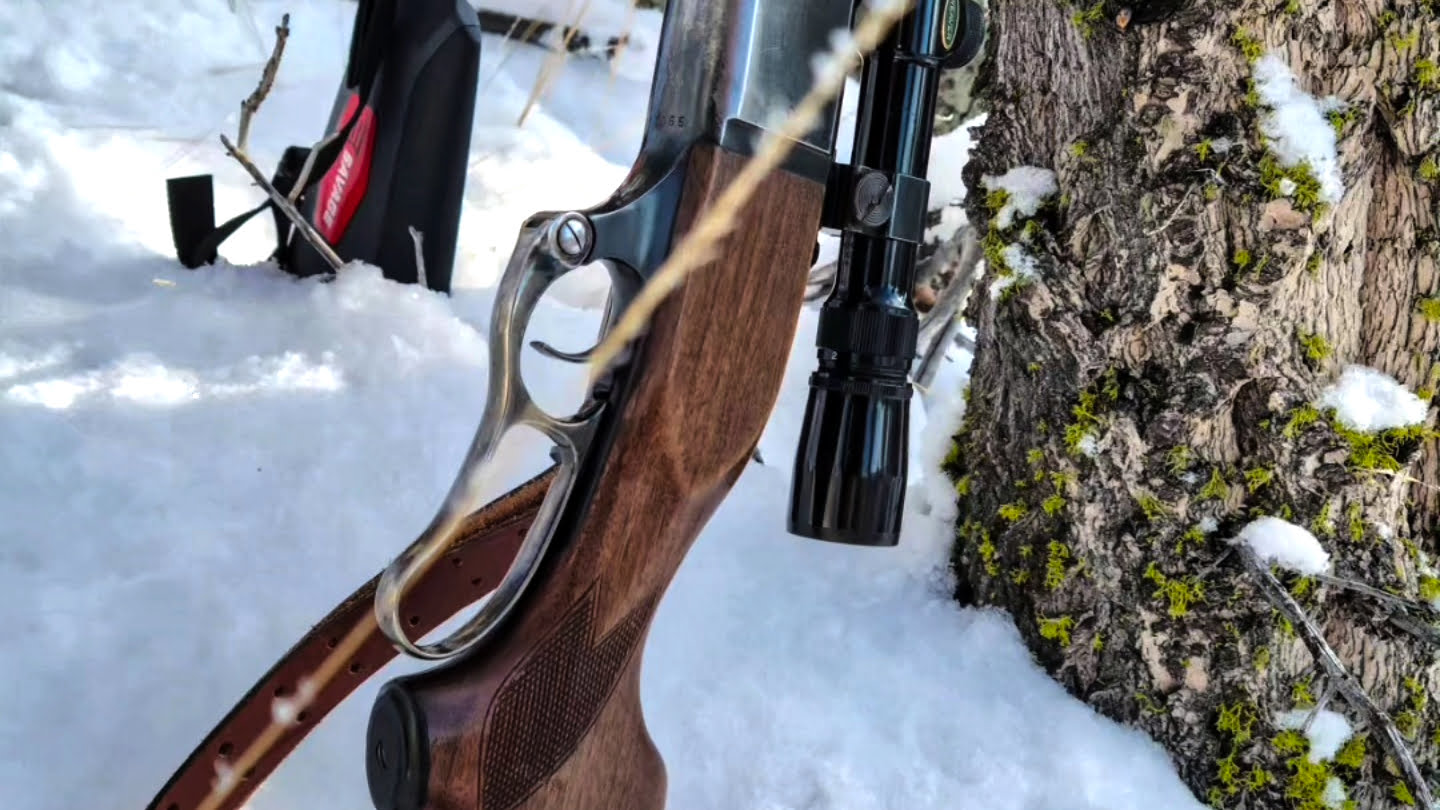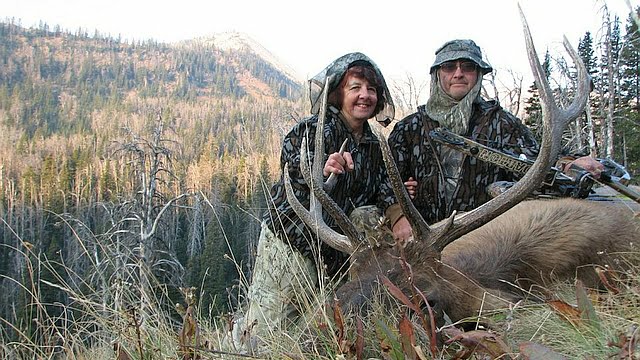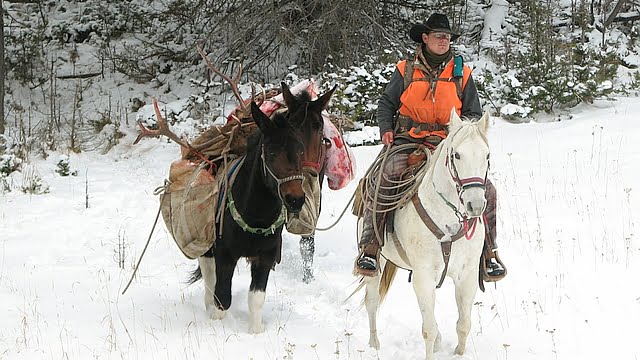The Adventure Cowboy
support@adventurecowboy.com
The Adventure Cowboy
support@adventurecowboy.com

...I'll start at square one with important things any hunter should consider as they begin planning a backcountry hunting adventure. MONEY...
I originally wrote this article in 2018 when I was actively guiding mountain hunts and spending a lot of time with clients. While many experienced hunters spend time with guides and outfitters from Alaska to Africa, this is written more for new hunters, and those who typically hunt on their own, but have considered the idea of guided hunts. In this article, I’ll start at square one with important things any hunter should consider as they begin planning a backcountry hunting adventure.
Money
Unfortunately, planning a backcountry hunt takes money, and in some cases a lot of money. It’s worth every penny if you do it with the right attitude. The important thing is to do your homework and plan for it. Unless you have a high-salary job or are independently wealthy, you will probably have to save up the cash to finance this adventure.
If you are married, the first thing you need to do is communicate with your spouse what it is that you want to do. If your spouse is not on board with your plans, you will find it very difficult to make this hunt happen. It may be that you make a deal with your spouse, like “I’ll build you a greenhouse if you let me go on this hunt.”, or she may say, “If you go on this hunt, I want to go to California with my girlfriends.” Or, the hunting enthusiast may be the wife, who needs to negotiate the same way. That may not be the case at all, but you need to consider how your loved ones feel about your investment.
Some outfitters offer group rates, so it might be worth talking friends into going with you. I have guided several hunts where six or seven friends have planned and saved for years to come out West on a hunting adventure, and when the big adventure finally happens, these types of groups often have the most fun. Why? Simple. It’s because they are in it for the right reasons. I will cover this later.
Some of the most touching moments I have ever experienced were guiding hunters who came with a family member. Most of the time it’s a father/son, husband/wife, father-in-law/son-in-law, and even a father/daughter combination. No matter the relation, special moments happen in the high country. Those are valuable times for relationships that may be worth a little additional investment to some of you.

Have you heard the term, sticker shock? Well, I am going to try to hit you with that right now so that you can get over it and move on with planning the adventure of a lifetime. The numbers I am going to give you are not some calculated national average, they are real numbers from a real backcountry outfitter, real taxidermists, and real meat processors. These are some of the biggest costs of your hunt, so I want to share real numbers with you.
There are outfitters out there with big, fancy lodges and lots of kill guarantees. This example will not be one of them. This outfitter is a family-run operation with nice facilities and the most genuine people you will ever meet. They do not measure their success by the amount of dead animals their clients take. They measure their success by happy smiles, tearful goodbyes, clients who have been coming back for 20 years, and returning their clients safely home to their families–hopefully with a trophy animal.
Breakdown of Costs
First, you will have to get your licenses and tags. I will use Montana as an example, however, every state (or country) is different. To hunt Montana as a Non-Resident (meaning you do not live or pay income tax in Montana), you should plan on applying for tags early in the year. The application deadline is March 15th, so do not wait until the last minute. In Montana, as of 2023, the cost of the Elk/Deer Combo license is $1089.50 and includes the base hunting license fee, conservation license, season fishing license, and upland bird license. (Montana’s FWP website)

Now that you have applied for your license, it’s time to select an outfitter. Even if you are an experienced hunter, if you have never hunted true backcountry, I heartily recommend hiring an outfitter for your first backcountry hunt. They take care of all the little things, so you don’t have to plan the logistics of food, lodging, transportation, packing game out of the mountains, etc. They also are very educated as to where the game is and how to get to them.
The cost of a rifle hunt with the outfitter I preferred working with through 2018 was $3700/person for a 7-day fully outfitted hunt and is probably closer to $4500 to $5000 for 2024. This price is one of the best value hunts in the state of Montana. Some outfitters are cheaper (in more ways than one), but usually, you will find they are shorter-duration hunts. Cost depends on the style of hunting, access to private ground, high-quality animals, accommodations, etc.
Now, let’s assume that you harvest a fine 6×6 trophy bull on your first backcountry hunt. This is not likely, but we’ll go ahead and be optimistic. You have just made a great shot on a magnificent bull, your guide has done all the dirty work and packed it out of the mountains to the lodge for you. After the adrenaline wears down, you start thinking, “Now what am I going to do with this thing?” There are three costs to consider when it comes to getting this fine bull elk home: meat processing, taxidermy, and shipping of both the trophy and the meat.
Meat processing will probably run you anywhere from $300 to $600 depending on how you have it cut. Basic cuts are going to be the least expensive, but sometimes a variety of sausages, pepper sticks, and jerky are worth the extra cost. And you better make room in that freezer at home because an old bull elk can yield as much as 270 pounds of meat. 200 pounds to 250 pounds is a realistic figure you could expect to deal with.
Taxidermy, Shipping your Meat Home, and Travel
Taxidermy
Taxidermy is the next shocker. Getting a shoulder mount of that big bull is probably going to cost you somewhere between $900 and $1200. Extra features like an open mouth or “bugling bull” are going to cost even more. If the bull you shoot is small, otherwise called a “raghorn”, and you don’t want to spend that kind of money on a trophy mount, then consider a European mount. A European mount is the full skull, bleached, and mounted on a plaque that you can hang on your wall. These mounts usually cost between $150 and $300 depending on the taxidermist and the type of plaque and nameplate. I shot a 300-inch bull with my bow and I wanted a shoulder mount, but I decided on a European mount for two reasons: #1, it was way less expensive, and #2, I only had an 8-foot high wall to hang it on. Shoulder mounts take up a lot of room.

Shipping your Meat and Trophy Home
If you traveled by plane to your hunting destination, then you will have to arrange to have your meat and trophy shipped to your home. These items will almost always ship separately because the meat will be ready long before the trophy (shoulder mount completion can range from four months to two years). My preferred taxidermist will ship your mount however you decide, but he has figured out that he can save his customers a lot of money by shipping mounts via Greyhound. Yep, on the bus. Many customers just schedule a road trip through the area and pick it up in person.
Shipping meat is REAL tricky. There are many different thoughts on the best method to get the meat home, so I am not going to say one is better than the other, but here are some things my clients did… (prices from 2018.)
Some hunters have the meat processor pack it, freeze it, and ship it to their home. This seems to be the most expensive option. I have heard of people paying between $600 and $800 to have their meat shipped cross-country. A popular option at the time was shipping clothes and gear home via Fed-Ex, UPS, or USPS, then taking the meat home on the plane in coolers or special boxes. At the time, flying the meat containers home ranged from $175 to $350. Most of my clients drove to our Montana location with pickups or large SUVs, bringing empty coolers with them. A couple of groups would bring a little trailer with a generator and a chest freezer. Driving is the option that I would recommend.
Travel
Don’t forget to calculate the costs of your travel. Travel costs fluctuate so much that I am not going to put a figure together on that one. Just don’t forget to add that cost in when figuring out your budget. If driving is not an option, flying would be the next most obvious choice. Outfitters will make arrangements for airport pickup, or a vehicle can be rented at the airport. Be sure it’s full-size 4×4 if you are on your own.
Tipping
Lastly, make sure you tip the staff. Working for an outfitter is a seasonal job that does not include benefits. Most guides, cooks, and wranglers work for a daily wage plus any tips that they get.
When I was starting out as a guide, and clients would hand me tips, I would say, “Oh no, that’s not necessary.” and try to give it back. However, I did not take long to figure out that I needed those tips! I learned to accept the tips graciously, feeling no shame at all. I worked my tail off for my clients. They knew it and appreciated my attitude and service.
When tipping, do not forget about the cook and the wrangler. Wranglers are often young men, fresh out of high school, with dreams of adventure. Most people never tip the wrangler because the wrangler works behind the scenes, but when you hand that young man a $50 or $100-bill, and a heartfelt “Thank You”, he feels a sense of accomplishment and it gives him that much more desire to do a good job for future clients.
There’s probably no one as important as the cook for making–or breaking–an otherwise great trip. Please don’t forget the cook! I don’t know how many times I have seen a client tip a guide several hundred dollars right in front of the cook, and then just give her a “Thanks. It was nice meeting you,” and walk out the door. Hell hath no fury like a cook scorned! Actually, the cooks I worked with were not only great cooks but were very gracious. I could see the hurt in their eyes watching rewards being given while their hard work and long hours were taken for granted.
My clients tipped me an average of about $500 back then. Occasionally, a client would give me more than that, and sometimes all I would get was a handshake. I handled this by never expecting a tip. Many guides I worked with depended on the tips to pay their bills though, so try to be understanding if your guide isn’t jumping for joy over your $50 tip.

Whether you are a new hunter or a seasoned hunter, you should always tip. I had one client I guided several times, who came out every year, and he never tipped. He was also one of the most difficult people to guide. We all still worked very hard to do a good job for him, but when you tip the cook with a company pad of sticky notes, the wrangler with a ripped pair of wool pants, and the guide with nothing, it does not make them excited for your return. (true story)
Approximate Total
If you have been doing some math for your next hunt while reading this article, you know that this adventure could cost you over $8,500 if you kill a trophy animal. My intention is not to discourage you from planning a thrilling backcountry hunting trip, quite the opposite. I just want to give you the bad news first so that you can absorb it, get over the sticker shock, and get to planning!
Of course, there are countless ways to cut costs, but this article is meant for those people who have never experienced a backcountry hunt and who just want to know what they can expect. If you are experienced in hunting the West, you might want to consider paying an outfitter for a drop camp, or just go DIY.
On virtually every backcountry hunt I have guided, something happened, or some words were spoken that changed either my life or the life of my client. There are moments steeped in the deafening silence that make you realize what is important in life, and there are those moments when standing over a magnificent animal on top of a snow-covered mountain, that words just cannot describe. What would that be worth to you? Whether it’s a one-time adventure of a lifetime or a traditional planned excursion, you will find the only adventure you’ll regret is the one you didn’t take.
Next Up Part 2: Choosing a Destination